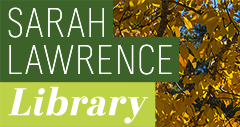Date of Award
5-2020
Document Type
Thesis - Open Access
Abstract
An estimated 2.1 million people in the US are estimated to have opioid use disorder. Medically assisted treatment as an approach utilizes medication, counseling, and group therapy for treatment of opioid use disorder and increases the effectiveness of other therapeutic interventions. It has positive effects on treatment retention, and doubles the probability that an individual will one day achieve abstinence. Medically assisted treatment addresses physical symptoms of withdrawal, but it does not include the embodied experience. Dance/movement therapy addresses the multilevel human experience in an approach to wellness. Dance/movement therapy as a bidirectional modality uses movement and body-mind connectivity to promote the integration of the emotional, social, cognitive and physical self to improve health and wellbeing.
Recommended Citation
Chipman, Jayann, "Stronger Together: A Case For Partnering Dance/Movement Therapy and Medically Assisted Treatment For A Comprehensive Embodied Approach To The Opioid Crisis" (2020). Dance/Movement Therapy Theses. 69.
https://digitalcommons.slc.edu/dmt_etd/69


